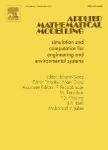版权所有:内蒙古大学图书馆 技术提供:维普资讯• 智图
内蒙古自治区呼和浩特市赛罕区大学西街235号 邮编: 010021

作者机构:Univ Sao Paulo Dept Mechatron & Mech Syst Engn Polytech Sch Sao Paulo SP Brazil Univ Sao Paulo Polytech Sch Dept Min & Petr Engn Santos SP Brazil Univ Sao Paulo Polytech Sch Dept Naval Architecture & Ocean Engn Sao Paulo SP Brazil
出 版 物:《APPLIED MATHEMATICAL MODELLING》 (应用数学模型)
年 卷 期:2024年第127卷
页 面:1-17页
核心收录:
学科分类:07[理学] 070104[理学-应用数学] 0701[理学-数学] 0801[工学-力学(可授工学、理学学位)]
基 金:FUSP (University of Sao Paulo Foundation) CNPq (National Council for Research and Development) [302658/2018-1] FAPESP (Sao Paulo Research Foundation) [2018/05797-8, 2019/01685-3] FAPESP [2014/50279-4, 2020/15230-5] Shell Brasil ANP (Brazil's National Oil) Biofuels Agency through the R&D levy regulation RCGI - Research Centre for Greenhouse Gas Innovation
主 题:Topology optimization Fluid flow Fluid-structure interaction Multi-objective optimization
摘 要:Fluid-structure interaction is a challenging topic that addresses fluid and solid physics, as well as the stress coupling between them. Traditional topology optimization methods are performed with coupling load interpolation schemes in order to have some information on fluid flow sensitivity analysis and improve compliance minimization into design-dependent problems. In this paper, we propose a strategy to design fluid-structure systems by combining solid and fluid objectives without the need for the coupling load interpolation scheme. Therefore, we investigate topology optimization applied to fluid-structure interaction problems via a multi objective formulation. We combine structural compliance with some fluid flow objective functions (energy dissipation, downforce, and drag) subject to a volume constraint. We assume linear elasticity for the solid and the steady incompressible Navier-Stokes equations for the fluid. The optimization problem is solved by using sequential integer linear programming via the TOBS (Topology Optimization of Binary Structures) method with a geometry trimming (GT) technique. It is a gradient-based method that produces explicit (discrete) boundaries that are convenient for coupled physics problems. Numerical results are presented for two and three-dimensional problems considering low to moderate Reynolds numbers. We demonstrate that the proposed multi-objective approach yields physically meaningful designs with improved performance, highlighting that the incorporation of coupling load interpolation into fluid-structure interaction optimization is redundant.